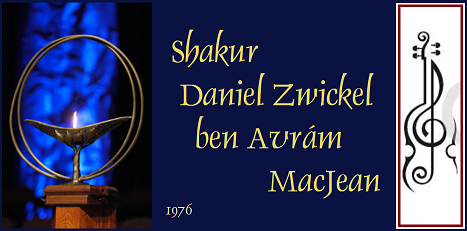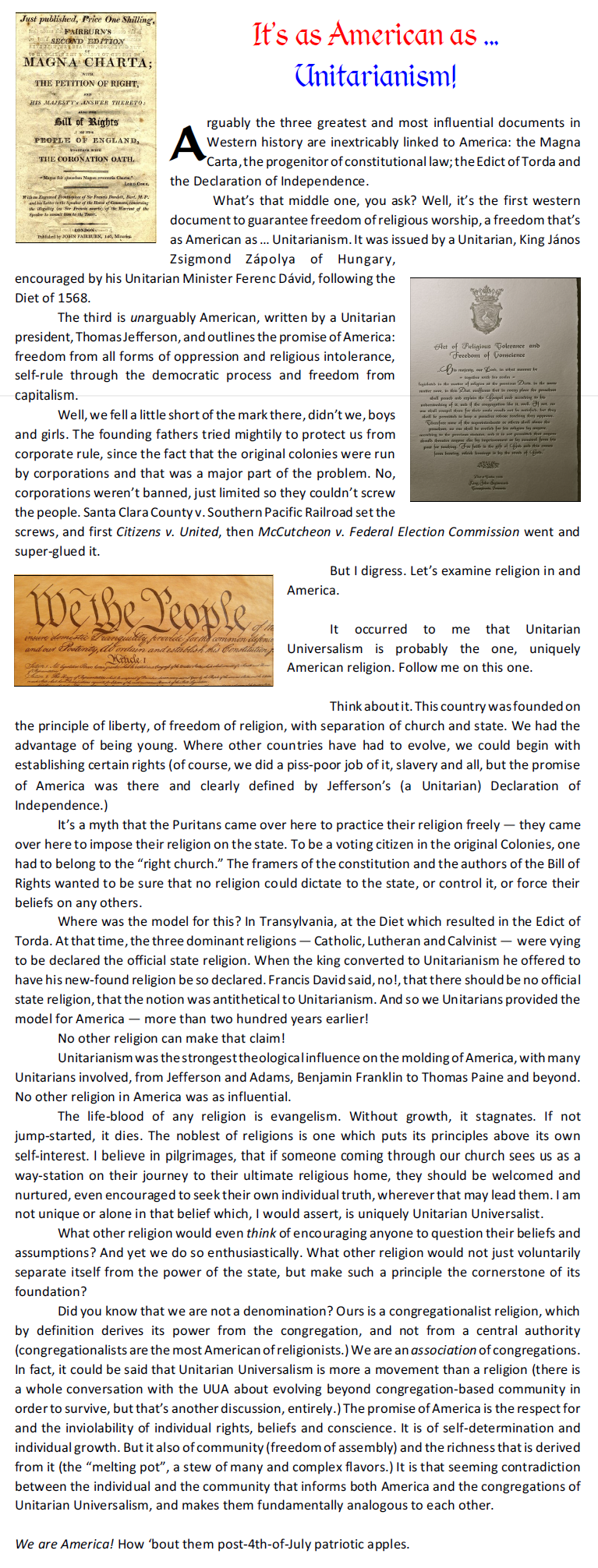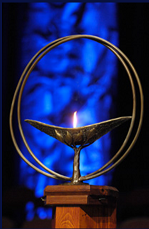|

CHAPTER
ONE
War Is A
Racket
WAR is a racket. It always has
been.
It is possibly the oldest,
easily the most profitable, surely the most
vicious. It is the only one international in
scope. It is the only one in which the
profits are reckoned in dollars and the
losses in lives.
A racket is best described, I
believe, as something that is not what it
seems to the majority of the people. Only a
small “inside” group knows what it is about.
It is conducted for the benefit of the very
few, at the expense of the very many. Out of
war a few people make huge fortunes.
In the World War [I] a mere
handful garnered the profits of the
conflict. At least 21,000 new millionaires
and billionaires were made in the United
States during the World War. That many
admitted their huge blood gains in their
income tax returns. How many other war
millionaires falsified their tax returns no
one knows.
How many of these war
millionaires shouldered a rifle? How many of
them dug a trench? How many of them knew
what it meant to go hungry in a rat-infested
dug-out? How many of them spent sleepless,
frightened nights, ducking shells and
shrapnel and machine gun bullets? How many
of them parried a bayonet thrust of an
enemy? How many of them were wounded or
killed in battle?
Out of war nations acquire
additional territory, if they are
victorious. They just take it. This newly
acquired territory promptly is exploited by
the few – the selfsame few who wrung dollars
out of blood in the war. The general public
shoulders the bill.
And what is this bill?
This bill renders a horrible
accounting. Newly placed gravestones.
Mangled bodies. Shattered minds. Broken
hearts and homes. Economic instability.
Depression and all its attendant miseries.
Back-breaking taxation for generations and
generations.
For a great many years, as a
soldier, I had a suspicion that war was a
racket; not until I retired to civil life
did I fully realize it. Now that I see the
international war clouds gathering, as they
are today, I must face it and speak out.
Again they are choosing sides.
France and Russia met and agreed to stand
side by side. Italy and Austria hurried to
make a similar agreement. Poland and Germany
cast sheep’s eyes at each other, forgetting
for the nonce [one unique occasion], their
dispute over the Polish Corridor.
The assassination of King
Alexander of Jugoslavia [Yugoslavia]
complicated matters. Jugoslavia and Hungary,
long bitter enemies, were almost at each
other’s throats. Italy was ready to jump in.
But France was waiting. So was
Czechoslovakia. All of them are looking
ahead to war. Not the people – not those who
fight and pay and die – only those who
foment wars and remain safely at home to
profit.
There are 40,000,000 men under
arms in the world today, and our statesmen
and diplomats have the temerity to say that
war is not in the making.
Hell’s bells! Are these
40,000,000 men being trained to be dancers?
Not in Italy, to be sure.
Premier Mussolini knows what they are being
trained for. He, at least, is frank enough
to speak out. Only the other day, Il Duce in
“International Conciliation,” the
publication of the Carnegie Endowment for
International Peace, said:
“And above all,
Fascism, the more it considers and
observes the future and the development of
humanity quite apart from political
considerations of the moment, believes
neither in the possibility nor the utility
of perpetual peace. . . . War alone brings
up to its highest tension all human energy
and puts the stamp of nobility upon the
people who have the courage to meet it.”
Undoubtedly Mussolini means
exactly what he says. His well-trained army,
his great fleet of planes, and even his navy
are ready for war – anxious for it,
apparently. His recent stand at the side of
Hungary in the latter’s dispute with
Jugoslavia showed that. And the hurried
mobilization of his troops on the Austrian
border after the assassination of Dollfuss
showed it too. There are others in Europe
too whose sabre rattling presages war,
sooner or later.
Herr Hitler, with his rearming
Germany and his constant demands for more
and more arms, is an equal if not greater
menace to peace. France only recently
increased the term of military service for
its youth from a year to eighteen months.
Yes, all over, nations are
camping in their arms. The mad dogs of
Europe are on the loose. In the Orient the
maneuvering is more adroit. Back in 1904,
when Russia and Japan fought, we kicked out
our old friends the Russians and backed
Japan. Then our very generous international
bankers were financing Japan. Now the trend
is to poison us against the Japanese. What
does the “open door” policy to China mean to
us?Our trade with China is about $90,000,000
a year. Or the Philippine Islands? We have
spent about $600,000,000 in the Philippines
in thirty-five years and we (our bankers and
industrialists and speculators) have private
investments there of less than $200,000,000.
Then, to save that China trade
of about $90,000,000, or to protect these
private investments of less than
$200,000,000 in the Philippines, we would be
all stirred up to hate Japan and go to war –
a war that might well cost us tens of
billions of dollars, hundreds of thousands
of lives of Americans, and many more
hundreds of thousands of physically maimed
and mentally unbalanced men.
Of course, for this loss, there
would be a compensating profit –fortunes
would be made. Millions and billions of
dollars would be piled up. By a few.
Munitions makers. Bankers. Ship builders.
Manufacturers. Meat packers. Speculators.
They would fare well.
Yes, they are getting ready for
another war. Why shouldn’t they? It pays
high dividends.
But what does it profit the men
who are killed? What does it profit their
mothers and sisters, their wives and their
sweethearts? What does it profit their
children?
What does it profit anyone
except the very few to whom war means huge
profits?
Yes, and what does it profit
the nation?
Take our own case. Until 1898
we didn’t own a bit of territory outside the
mainland of North America. At that time our
national debt was a little more than
$1,000,000,000. Then we became
“internationally minded.” We forgot, or
shunted aside, the advice of the Father of
our country. We forgot George Washington’s
warning about “entangling alliances.” We
went to war. We acquired outside territory.
At the end of the World War period, as a
direct result of our fiddling in
international affairs, our national debt had
jumped to over $25,000,000,000. Our total
favorable trade balance during the
twenty-five-year period was about
$24,000,000,000. Therefore, on a purely
bookkeeping basis, we ran a little behind
year for year, and that foreign trade might
well have been ours without the wars.
It would have been far cheaper
(not to say safer) for the average American
who pays the bills to stay out of foreign
entanglements. For a very few this racket,
like bootlegging and other underworld
rackets, brings fancy profits, but the cost
of operations is always transferred to the
people – who do not profit.

CHAPTER
TWO
Who Makes
The Profits?
The World War, rather our brief
participation in it, has cost the United
States some $52,000,000,000. Figure it out.
That means $400 to every American man,
woman, and child. And we haven’t paid the
debt yet. We are paying it, our children
will pay it, and our children’s children
probably still will be paying the cost of
that war.
The normal profits of a
business concern in the United States are
six, eight, ten, and sometimes twelve
percent. But war-time profits – ah! that is
another matter – twenty, sixty, one hundred,
three hundred, and even eighteen hundred per
cent – the sky is the limit. All that
traffic will bear. Uncle Sam has the money.
Let’s get it.
Of course, it isn’t put that
crudely in war time. It is dressed into
speeches about patriotism, love of country,
and “we must all put our shoulders to the
wheel,” but the profits jump and leap and
skyrocket – and are safely pocketed. Let’s
just take a few examples:
Take our friends the du Ponts,
the powder people – didn’t one of them
testify before a Senate committee recently
that their powder won the war? Or saved the
world for democracy? Or something? How did
they do in the war? They were a patriotic
corporation. Well, the average earnings of
the du Ponts for the period 1910 to 1914
were $6,000,000 a year. It wasn’t much, but
the du Ponts managed to get along on it. Now
let’s look at their average yearly profit
during the war years, 1914 to 1918.
Fifty-eight million dollars a year profit we
find! Nearly ten times that of normal times,
and the profits of normal times were pretty
good. An increase in profits of more than
950 per cent.
Take one of our little steel
companies that patriotically shunted aside
the making of rails and girders and bridges
to manufacture war materials. Well, their
1910-1914 yearly earnings averaged
$6,000,000. Then came the war. And, like
loyal citizens, Bethlehem Steel promptly
turned to munitions making. Did their
profits jump – or did they let Uncle Sam in
for a bargain? Well, their 1914-1918 average
was $49,000,000 a year!
Or, let’s take United States
Steel. The normal earnings during the
five-year period prior to the war were
$105,000,000 a year. Not bad. Then along
came the war and up went the profits. The
average yearly profit for the period
1914-1918 was $240,000,000. Not bad.
There you have some of the
steel and powder earnings. Let’s look at
something else. A little copper, perhaps.
That always does well in war times.
Anaconda, for instance. Average
yearly earnings during the pre-war years
1910-1914 of $10,000,000. During the war
years 1914-1918 profits leaped to
$34,000,000 per year.
Or Utah Copper. Average of
$5,000,000 per year during the 1910-1914
period. Jumped to an average of $21,000,000
yearly profits for the war period.
Let’s group these five, with
three smaller companies. The total yearly
average profits of the pre-war period
1910-1914 were $137,480,000. Then along came
the war. The average yearly profits for this
group skyrocketed to $408,300,000.
A little increase in profits of
approximately 200 per cent.
Does war pay? It paid them. But
they aren’t the only ones. There are still
others. Let’s take leather.
For the three-year period
before the war the total profits of Central
Leather Company were $3,500,000. That was
approximately $1,167,000 a year. Well, in
1916 Central Leather returned a profit of
$15,000,000, a small increase of 1,100 per
cent. That’s all. The General Chemical
Company averaged a profit for the three
years before the war of a little over
$800,000 a year. Came the war, and the
profits jumped to $12,000,000. a leap of
1,400 per cent.
International Nickel Company –
and you can’t have a war without nickel –
showed an increase in profits from a mere
average of $4,000,000 a year to $73,000,000
yearly. Not bad? An increase of more than
1,700 per cent.
American Sugar Refining Company
averaged $2,000,000 a year for the three
years before the war. In 1916 a profit of
$6,000,000 was recorded.
Listen to Senate Document No.
259. The Sixty-Fifth Congress, reporting on
corporate earnings and government revenues.
Considering the profits of 122 meat packers,
153 cotton manufacturers, 299 garment
makers, 49 steel plants, and 340 coal
producers during the war. Profits under 25
per cent were exceptional. For instance the
coal companies made between 100 per cent and
7,856 per cent on their capital stock during
the war. The Chicago packers doubled and
tripled their earnings.
And let us not forget the
bankers who financed the great war. If
anyone had the cream of the profits it was
the bankers. Being partnerships rather than
incorporated organizations, they do not have
to report to stockholders. And their profits
were as secret as they were immense. How the
bankers made their millions and their
billions I do not know, because those little
secrets never become public – even before a
Senate investigatory body.
But here’s how some of the
other patriotic industrialists and
speculators chiseled their way into war
profits.
Take the shoe people. They like
war. It brings business with abnormal
profits. They made huge profits on sales
abroad to our allies. Perhaps, like the
munitions manufacturers and armament makers,
they also sold to the enemy. For a dollar is
a dollar whether it comes from Germany or
from France. But they did well by Uncle Sam
too. For instance, they sold Uncle Sam
35,000,000 pairs of hobnailed service shoes.
There were 4,000,000 soldiers. Eight pairs,
and more, to a soldier. My regiment during
the war had only one pair to a soldier. Some
of these shoes probably are still in
existence. They were good shoes. But when
the war was over Uncle Sam has a matter of
25,000,000 pairs left over. Bought – and
paid for. Profits recorded and pocketed.
There was still lots of leather
left. So the leather people sold your Uncle
Sam hundreds of thousands of McClellan
saddles for the cavalry. But there wasn’t
any American cavalry overseas! Somebody had
to get rid of this leather, however.
Somebody had to make a profit in it – so we
had a lot of McClellan saddles. And we
probably have those yet.
Also somebody had a lot of
mosquito netting. They sold your Uncle Sam
20,000,000 mosquito nets for the use of the
soldiers overseas. I suppose the boys were
expected to put it over them as they tried
to sleep in muddy trenches – one hand
scratching cooties on their backs and the
other making passes at scurrying rats. Well,
not one of these mosquito nets ever got to
France!
Anyhow, these thoughtful
manufacturers wanted to make sure that no
soldier would be without his mosquito net,
so 40,000,000 additional yards of mosquito
netting were sold to Uncle Sam.
There were pretty good profits
in mosquito netting in those days, even if
there were no mosquitoes in France. I
suppose, if the war had lasted just a little
longer, the enterprising mosquito netting
manufacturers would have sold your Uncle Sam
a couple of consignments of mosquitoes to
plant in France so that more mosquito
netting would be in order.
Airplane and engine
manufacturers felt they, too, should get
their just profits out of this war. Why not?
Everybody else was getting theirs. So
$1,000,000,000 – count them if you live long
enough – was spent by Uncle Sam in building
airplane engines that never left the ground!
Not one plane, or motor, out of the billion
dollars worth ordered, ever got into a
battle in France. Just the same the
manufacturers made their little profit of
30, 100, or perhaps 300 per cent.
Undershirts for soldiers cost
14¢ [cents] to make and uncle Sam paid 30¢
to 40¢ each for them – a nice little profit
for the undershirt manufacturer. And the
stocking manufacturer and the uniform
manufacturers and the cap manufacturers and
the steel helmet manufacturers – all got
theirs.
Why, when the war was over some
4,000,000 sets of equipment – knapsacks and
the things that go to fill them – crammed
warehouses on this side. Now they are being
scrapped because the regulations have
changed the contents. But the manufacturers
collected their wartime profits on them —
and they will do it all over again the next
time.
There were lots of brilliant
ideas for profit making during the war.
One very versatile patriot sold
Uncle Sam twelve dozen 48-inch wrenches. Oh,
they were very nice wrenches. The only
trouble was that there was only one nut ever
made that was large enough for these
wrenches. That is the one that holds the
turbines at Niagara Falls. Well, after Uncle
Sam had bought them and the manufacturer had
pocketed the profit, the wrenches were put
on freight cars and shunted all around the
United States in an effort to find a use for
them. When the Armistice was signed it was
indeed a sad blow to the wrench
manufacturer. He was just about to make some
nuts to fit the wrenches. Then he planned to
sell these, too, to your Uncle Sam.
Still another had the brilliant
idea that colonels shouldn’t ride in
automobiles, nor should they even ride on
horseback. One has probably seen a picture
of Andy Jackson riding in a buckboard. Well,
some 6,000 buckboards were sold to Uncle Sam
for the use of colonels! Not one of them was
used. But the buckboard manufacturer got his
war profit.
The shipbuilders felt they
should come in on some of it, too. They
built a lot of ships that made a lot of
profit. More than $3,000,000,000 worth. Some
of the ships were all right. But
$635,000,000 worth of them were made of wood
and wouldn’t float! The seams opened up —
and they sank. We paid for them, though. And
somebody pocketed the profits.
It has been estimated by
statisticians and economists and researchers
that the war cost your Uncle Sam
$52,000,000,000. Of this sum,
$39,000,000,000 was expended in the actual
war itself. This expenditure yielded
$16,000,000,000 in profits. That is how the
21,000 billionaires and millionaires got
that way. This $16,000,000,000 profits is
not to be sneezed at. It is quite a tidy
sum. And it went to a very few.
The Senate (Nye) committee
probe of the munitions industry and its
wartime profits, despite its sensational
disclosures, hardly has scratched the
surface.
Even so, it has had some
effect. The State Department has been
studying “for some time” methods of keeping
out of war. The War Department suddenly
decides it has a wonderful plan to spring.
The Administration names a committee – with
the War and Navy Departments ably
represented under the chairmanship of a Wall
Street speculator – to limit profits in war
time. To what extent isn’t suggested. Hmmm.
Possibly the profits of 300 and 600 and
1,600 per cent of those who turned blood
into gold in the World War would be limited
to some smaller figure.
Apparently, however, the plan
does not call for any limitation of losses –
that is, the losses of those who fight the
war. As far as I have been able to ascertain
there is nothing in the scheme to limit a
soldier to the loss of but one eye, or one
arm, or to limit his wounds to one or two or
three. Or to limit the loss of life.
There is nothing in this
scheme, apparently, that says not more than
12 per cent of a regiment shall be wounded
in battle, or that not more than 7 per cent
in a division shall be killed.
Of course, the committee cannot
be bothered with such trifling matters.

CHAPTER
THREE
Who Pays The
Bills?
Who provides the profits –
these nice little profits of 20, 100, 300,
1,500 and 1,800 per cent? We all pay them –
in taxation. We paid the bankers their
profits when we bought Liberty Bonds at
$100.00 and sold them back at $84 or $86 to
the bankers. These bankers collected $100
plus. It was a simple manipulation. The
bankers control the security marts. It was
easy for them to depress the price of these
bonds. Then all of us – the people – got
frightened and sold the bonds at $84 or $86.
The bankers bought them. Then these same
bankers stimulated a boom and government
bonds went to par – and above. Then the
bankers collected their profits.
But the soldier pays the
biggest part of the bill.
If you don’t believe this,
visit the American cemeteries on the
battlefields abroad. Or visit any of the
veteran’s hospitals in the United States. On
a tour of the country, in the midst of which
I am at the time of this writing, I have
visited eighteen government hospitals for
veterans. In them are a total of about
50,000 destroyed men – men who were the pick
of the nation eighteen years ago. The very
able chief surgeon at the government
hospital; at Milwaukee, where there are
3,800 of the living dead, told me that
mortality among veterans is three times as
great as among those who stayed at home.
Boys with a normal viewpoint
were taken out of the fields and offices and
factories and classrooms and put into the
ranks. There they were remolded; they were
made over; they were made to “about face”;
to regard murder as the order of the day.
They were put shoulder to shoulder and,
through mass psychology, they were entirely
changed. We used them for a couple of years
and trained them to think nothing at all of
killing or of being killed.
Then, suddenly, we discharged
them and told them to make another “about
face” ! This time they had to do their own
readjustment, sans [without]mass psychology,
sans officers’ aid and advice and sans
nation-wide propaganda. We didn’t need them
any more. So we scattered them about without
any “three-minute” or “Liberty Loan”
speeches or parades. Many, too many, of
these fine young boys are eventually
destroyed, mentally, because they could not
make that final “about face” alone.
In the government hospital in
Marion, Indiana, 1,800 of these boys are in
pens! Five hundred of them in a barracks
with steel bars and wires all around outside
the buildings and on the porches. These
already have been mentally destroyed. These
boys don’t even look like human beings. Oh,
the looks on their faces! Physically, they
are in good shape; mentally, they are gone.
There are thousands and
thousands of these cases, and more and more
are coming in all the time. The tremendous
excitement of the war, the sudden cutting
off of that excitement – the young boys
couldn’t stand it.
That’s a part of the bill. So
much for the dead – they have paid their
part of the war profits. So much for the
mentally and physically wounded – they are
paying now their share of the war profits.
But the others paid, too – they paid with
heartbreaks when they tore themselves away
from their firesides and their families to
don the uniform of Uncle Sam – on which a
profit had been made. They paid another part
in the training camps where they were
regimented and drilled while others took
their jobs and their places in the lives of
their communities. The paid for it in the
trenches where they shot and were shot;
where they were hungry for days at a time;
where they slept in the mud and the cold and
in the rain – with the moans and shrieks of
the dying for a horrible lullaby.
But don’t forget – the soldier
paid part of the dollars and cents bill too.
Up to and including the
Spanish-American War, we had a prize system,
and soldiers and sailors fought for money.
During the Civil War they were paid bonuses,
in many instances, before they went into
service. The government, or states, paid as
high as $1,200 for an enlistment. In the
Spanish-American War they gave prize money.
When we captured any vessels, the soldiers
all got their share – at least, they were
supposed to. Then it was found that we could
reduce the cost of wars by taking all the
prize money and keeping it, but conscripting
[drafting] the soldier anyway. Then soldiers
couldn’t bargain for their labor, Everyone
else could bargain, but the soldier
couldn’t.
Napoleon once said,
“All men are
enamored of decorations . . . they
positively hunger for them.”
So by developing the Napoleonic
system – the medal business – the government
learned it could get soldiers for less
money, because the boys liked to be
decorated. Until the Civil War there were no
medals. Then the Congressional Medal of
Honor was handed out. It made enlistments
easier. After the Civil War no new medals
were issued until the Spanish-American War.
In the World War, we used
propaganda to make the boys accept
conscription. They were made to feel ashamed
if they didn’t join the army.
So vicious was this war
propaganda that even God was brought into
it. With few exceptions our clergymen joined
in the clamor to kill, kill, kill. To kill
the Germans. God is on our side . . . it is
His will that the Germans be killed.
And in Germany, the good
pastors called upon the Germans to kill the
allies . . . to please the same God. That
was a part of the general propaganda, built
up to make people war conscious and murder
conscious.
Beautiful ideals were painted
for our boys who were sent out to die. This
was the “war to end all wars.” This was the
“war to make the world safe for democracy.”
No one mentioned to them, as they marched
away, that their going and their dying would
mean huge war profits. No one told these
American soldiers that they might be shot
down by bullets made by their own brothers
here. No one told them that the ships on
which they were going to cross might be
torpedoed by submarines built with United
States patents. They were just told it was
to be a “glorious adventure.”
Thus, having stuffed patriotism
down their throats, it was decided to make
them help pay for the war, too. So, we gave
them the large salary of $30 a month.
All they had to do for this
munificent sum was to leave their dear ones
behind, give up their jobs, lie in swampy
trenches, eat canned willy (when they could
get it) and kill and kill and kill . . . and
be killed.
But wait!
Half of that wage (just a
little more than a riveter in a shipyard or
a laborer in a munitions factory safe at
home made in a day) was promptly taken from
him to support his dependents, so that they
would not become a charge upon his
community. Then we made him pay what
amounted to accident insurance – something
the employer pays for in an enlightened
state – and that cost him $6 a month. He had
less than $9 a month left.
Then, the most crowning
insolence of all – he was virtually
blackjacked into paying for his own
ammunition, clothing, and food by being made
to buy Liberty Bonds. Most soldiers got no
money at all on pay days.
We made them buy Liberty Bonds
at $100 and then we bought them back – when
they came back from the war and couldn’t
find work – at $84 and $86. And the soldiers
bought about $2,000,000,000 worth of these
bonds!
Yes, the soldier pays the
greater part of the bill. His family pays
too. They pay it in the same heart-break
that he does. As he suffers, they suffer. At
nights, as he lay in the trenches and
watched shrapnel burst about him, they lay
home in their beds and tossed sleeplessly –
his father, his mother, his wife, his
sisters, his brothers, his sons, and his
daughters.
When he returned home minus an
eye, or minus a leg or with his mind broken,
they suffered too – as much as and even
sometimes more than he. Yes, and they, too,
contributed their dollars to the profits of
the munitions makers and bankers and
shipbuilders and the manufacturers and the
speculators made. They, too, bought Liberty
Bonds and contributed to the profit of the
bankers after the Armistice in the
hocus-pocus of manipulated Liberty Bond
prices.
And even now the families of
the wounded men and of the mentally broken
and those who never were able to readjust
themselves are still suffering and still
paying.

CHAPTER
FOUR
How To Smash
This Racket!
WELL, it’s a racket, all right.
A few profit – and the many
pay. But there is a way to stop it. You
can’t end it by disarmament conferences. You
can’t eliminate it by peace parleys at
Geneva. Well-meaning but impractical groups
can’t wipe it out by resolutions. It can be
smashed effectively only by taking the
profit out of war.
The only way to smash this
racket is to conscript capital and industry
and labor before the nations manhood can be
conscripted. One month before the Government
can conscript the young men of the nation –
it must conscript capital and industry and
labor. Let the officers and the directors
and the high-powered executives of our
armament factories and our munitions makers
and our shipbuilders and our airplane
builders and the manufacturers of all the
other things that provide profit in war time
as well as the bankers and the speculators,
be conscripted – to get $30 a month, the
same wage as the lads in the trenches get.
Let the workers in these plants
get the same wages – all the workers, all
presidents, all executives, all directors,
all managers, all bankers – yes, and all
generals and all admirals and all officers
and all politicians and all government
office holders – everyone in the nation be
restricted to a total monthly income not to
exceed that paid to the soldier in the
trenches!
Let all these kings and tycoons
and masters of business and all those
workers in industry and all our senators and
governors and majors pay half of their
monthly $30 wage to their families and pay
war risk insurance and buy Liberty Bonds.
Why shouldn’t they?
They aren’t running any risk of
being killed or of having their bodies
mangled or their minds shattered. They
aren’t sleeping in muddy trenches. They
aren’t hungry. The soldiers are!
Give capital and industry and
labor thirty days to think it over and you
will find, by that time, there will be no
war. That will smash the war racket – that
and nothing else.
Maybe I am a little too
optimistic. Capital still has some say. So
capital won’t permit the taking of the
profit out of war until the people – those
who do the suffering and still pay the price
– make up their minds that those they elect
to office shall do their bidding, and not
that of the profiteers.
Another step necessary in this
fight to smash the war racket is the limited
plebiscite to determine whether a war should
be declared. A plebiscite not of all the
voters but merely of those who would be
called upon to do the fighting and dying.
There wouldn’t be very much sense in having
a 76-year-old president of a munitions
factory or the flat-footed head of an
international banking firm or the cross-eyed
manager of a uniform manufacturing plant –
all of whom see visions of tremendous
profits in the event of war – voting on
whether the nation should go to war or not.
They never would be called upon to shoulder
arms – to sleep in a trench and to be shot.
Only those who would be called upon to risk
their lives for their country should have
the privilege of voting to determine whether
the nation should go to war.
There is ample precedent for
restricting the voting to those affected.
Many of our states have restrictions on
those permitted to vote. In most, it is
necessary to be able to read and write
before you may vote. In some, you must own
property. It would be a simple matter each
year for the men coming of military age to
register in their communities as they did in
the draft during the World War and be
examined physically. Those who could pass
and who would therefore be called upon to
bear arms in the event of war would be
eligible to vote in a limited plebiscite.
They should be the ones to have the power to
decide – and not a Congress few of whose
members are within the age limit and fewer
still of whom are in physical condition to
bear arms. Only those who must suffer should
have the right to vote.
A third step in this business
of smashing the war racket is to make
certain that our military forces are truly
forces for defense only.
At each session of Congress the
question of further naval appropriations
comes up. The swivel-chair admirals of
Washington (and there are always a lot of
them) are very adroit lobbyists. And they
are smart. They don’t shout that “We need a
lot of battleships to war on this nation or
that nation.” Oh no. First of all,they let
it be known that America is menaced by a
great naval power. Almost any day, these
admirals will tell you, the great fleet of
this supposed enemy will strike suddenly and
annihilate 125,000,000 people. Just like
that. Then they begin to cry for a larger
navy. For what? To fight the enemy? Oh my,
no. Oh, no. For defense purposes only.
Then, incidentally, they
announce maneuvers in the Pacific. For
defense. Uh, huh.
The Pacific is a great big
ocean. We have a tremendous coastline on the
Pacific. Will the maneuvers be off the
coast, two or three hundred miles? Oh, no.
The maneuvers will be two thousand, yes,
perhaps even thirty-five hundred miles, off
the coast.
The Japanese, a proud people,
of course will be pleased beyond expression
to see the united States fleet so close to
Nippon’s shores. Even as pleased as would be
the residents of California were they to
dimly discern through the morning mist, the
Japanese fleet playing at war games off Los
Angeles.
The ships of our navy, it can
be seen, should be specifically limited, by
law, to within 200 miles of our coastline.
Had that been the law in 1898 the Maine
would never have gone to Havana Harbor. She
never would have been blown up. There would
have been no war with Spain with its
attendant loss of life. Two hundred miles is
ample, in the opinion of experts, for
defense purposes. Our nation cannot start an
offensive war if its ships can’t go further
than 200 miles from the coastline. Planes
might be permitted to go as far as 500 miles
from the coast for purposes of
reconnaissance. And the army should never
leave the territorial limits of our nation.
To summarize: Three steps must
be taken to smash the war racket.
-
We must take the profit
out of war.
-
We must permit the
youth of the land who would bear
arms to decide whether or not there
should be war.
-
We must limit our
military forces to home defense
purposes.

CHAPTER
FIVE
To Hell With
War!
I am not a fool as to believe
that war is a thing of the past. I know the
people do not want war, but there is no use
in saying we cannot be pushed into another
war.
Looking back, Woodrow Wilson
was re-elected president in 1916 on a
platform that he had “kept us out of war”
and on the implied promise that he would
“keep us out of war.” Yet, five months later
he asked Congress to declare war on Germany.
In that five-month interval the
people had not been asked whether they had
changed their minds. The 4,000,000 young men
who put on uniforms and marched or sailed
away were not asked whether they wanted to
go forth to suffer and die.
Then what caused our government
to change its mind so suddenly?
Money.
An allied commission, it may be
recalled, came over shortly before the war
declaration and called on the President. The
President summoned a group of advisers. The
head of the commission spoke. Stripped of
its diplomatic language, this is what he
told the President and his group:
“There is no use
kidding ourselves any longer. The cause of
the allies is lost. We now owe you
(American bankers, American munitions
makers, American manufacturers, American
speculators, American exporters) five or
six billion dollars.
If we lose (and
without the help of the United States we
must lose) we, England, France and Italy,
cannot pay back this money . . . and
Germany won’t.
So . . . ”
Had secrecy been outlawed as
far as war negotiations were concerned, and
had the press been invited to be present at
that conference, or had radio been available
to broadcast the proceedings, America never
would have entered the World War. But this
conference, like all war discussions, was
shrouded in utmost secrecy. When our boys
were sent off to war they were told it was a
“war to make the world safe for democracy”
and a “war to end all wars.”
Well, eighteen years after, the
world has less of democracy than it had
then. Besides, what business is it of ours
whether Russia or Germany or England or
France or Italy or Austria live under
democracies or monarchies? Whether they are
Fascists or Communists? Our problem is to
preserve our own democracy.
And very little, if anything,
has been accomplished to assure us that the
World War was really the war to end all
wars.
Yes, we have had disarmament
conferences and limitations of arms
conferences. They don’t mean a thing. One
has just failed; the results of another have
been nullified. We send our professional
soldiers and our sailors and our politicians
and our diplomats to these conferences. And
what happens?
The professional soldiers and
sailors don’t want to disarm. No admiral
wants to be without a ship. No general wants
to be without a command. Both mean men
without jobs. They are not for disarmament.
They cannot be for limitations of arms. And
at all these conferences, lurking in the
background but all-powerful, just the same,
are the sinister agents of those who profit
by war. They see to it that these
conferences do not disarm or seriously limit
armaments.
The chief aim of any power at
any of these conferences has not been to
achieve disarmament to prevent war but
rather to get more armament for itself and
less for any potential foe.
There is only one way to disarm
with any semblance of practicability. That
is for all nations to get together and scrap
every ship, every gun, every rifle, every
tank, every war plane. Even this, if it were
possible, would not be enough.
The next war, according to
experts, will be fought not with
battleships, not by artillery, not with
rifles and not with machine guns. It will be
fought with deadly chemicals and gases.
Secretly each nation is
studying and perfecting newer and ghastlier
means of annihilating its foes wholesale.
Yes, ships will continue to be built, for
the shipbuilders must make their profits.
And guns still will be manufactured and
powder and rifles will be made, for the
munitions makers must make their huge
profits. And the soldiers, of course, must
wear uniforms, for the manufacturer must
make their war profits too.
But victory or defeat will be
determined by the skill and ingenuity of our
scientists.
If we put them to work making
poison gas and more and more fiendish
mechanical and explosive instruments of
destruction, they will have no time for the
constructive job of building greater
prosperity for all peoples. By putting them
to this useful job, we can all make more
money out of peace than we can out of war –
even the munitions makers.
So … I say,
TO
HELL WITH WAR!
|





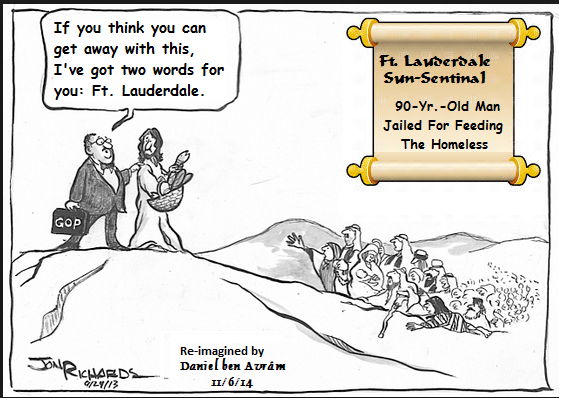
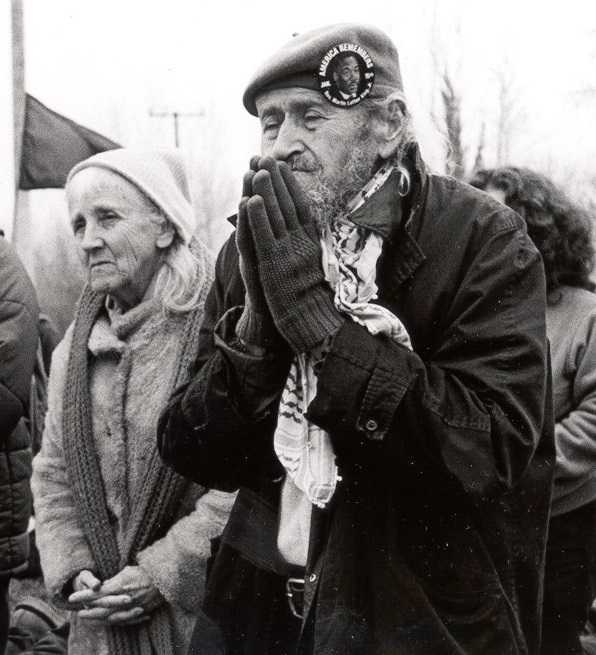
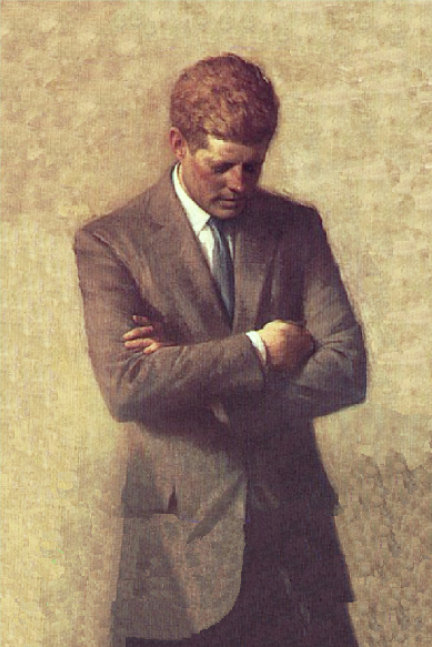
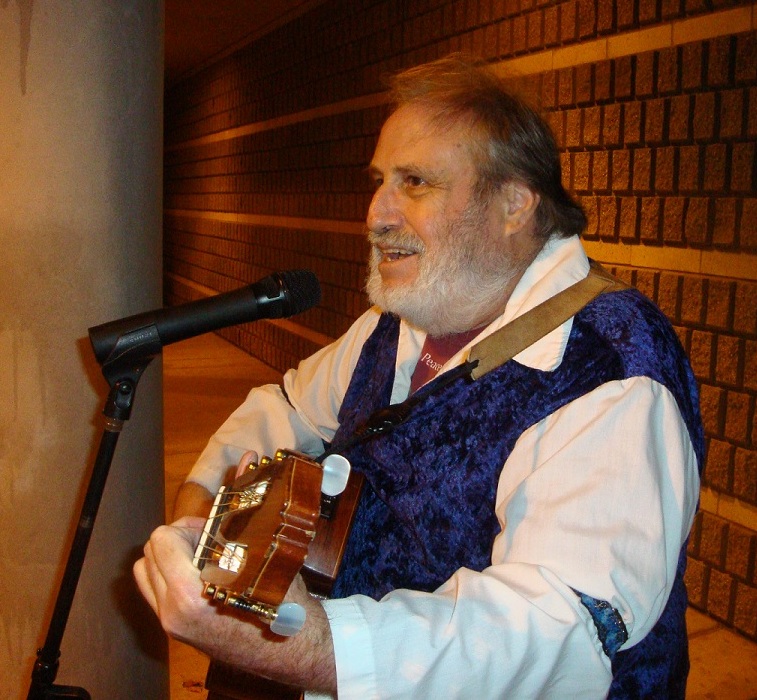


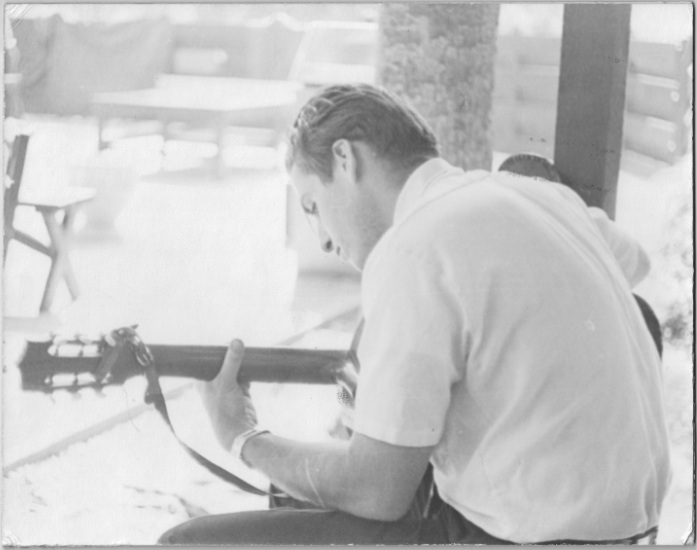
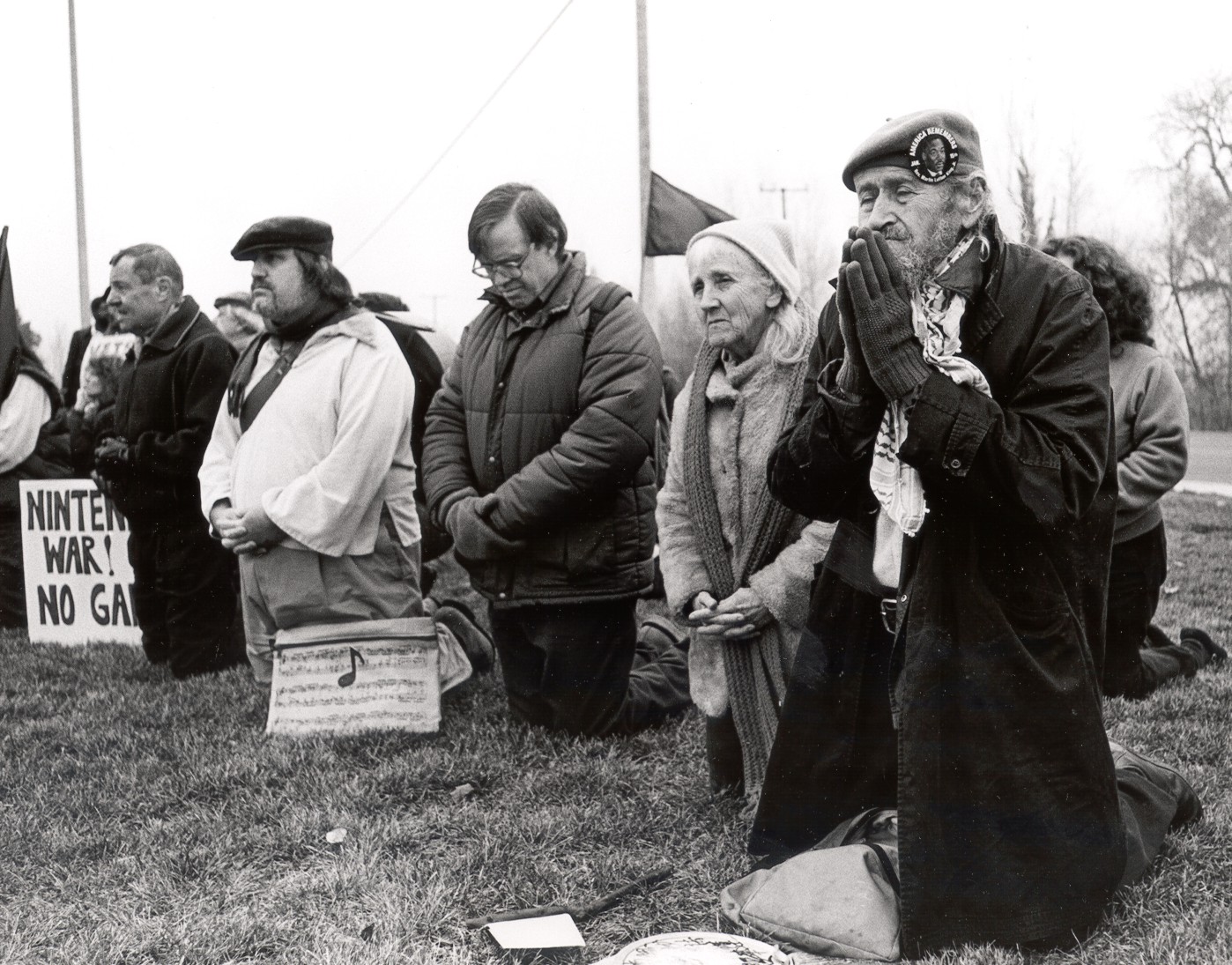
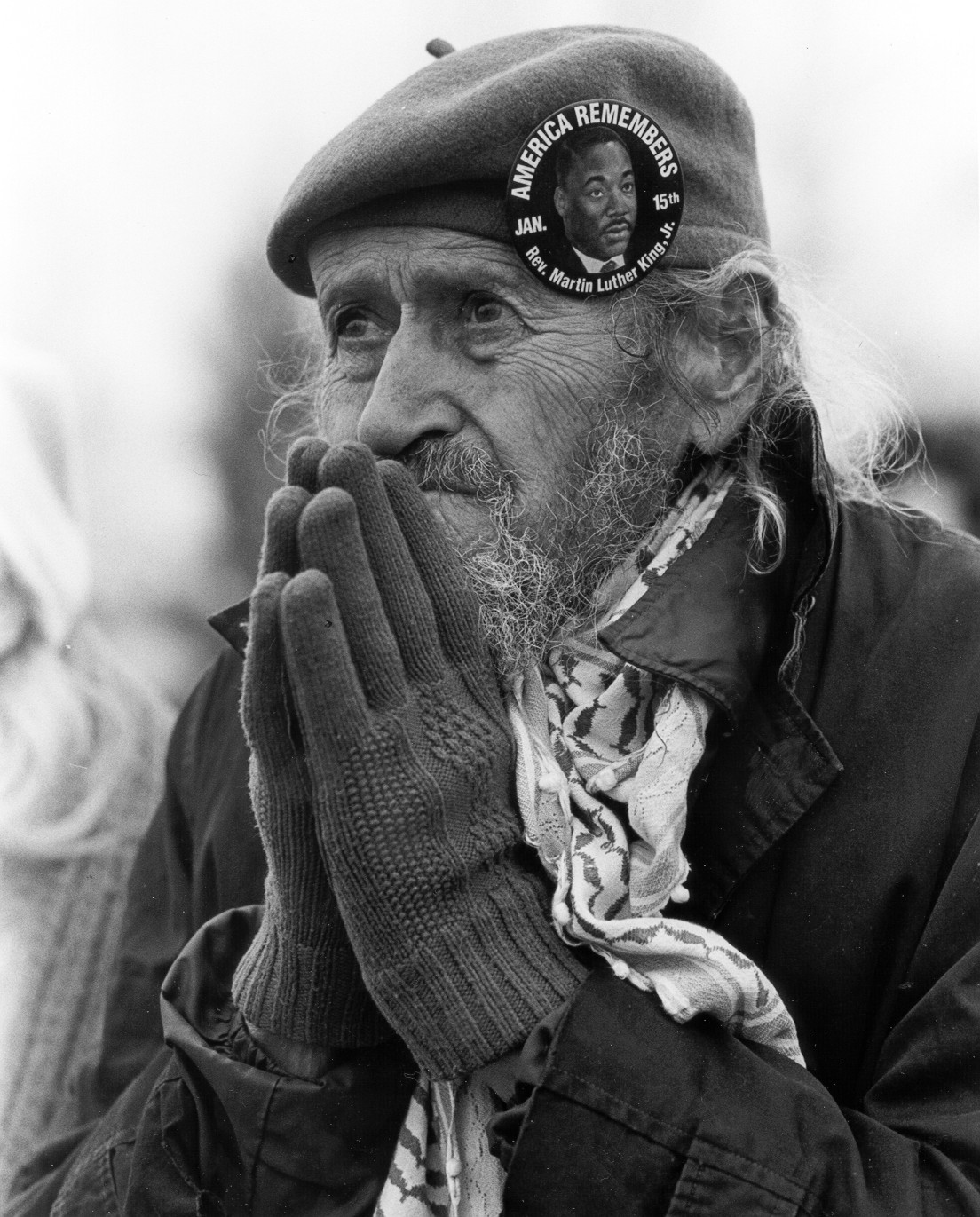


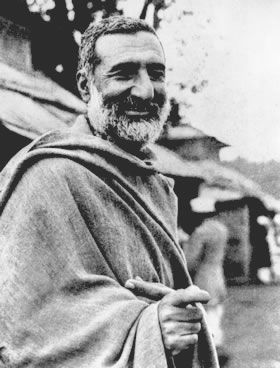
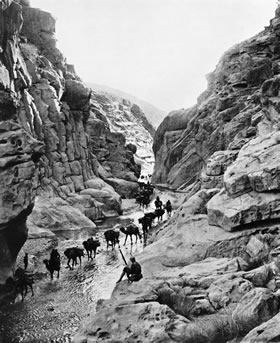
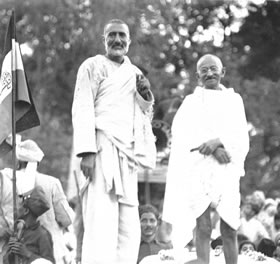
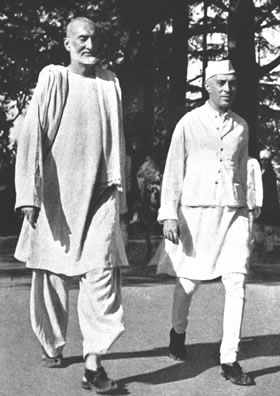
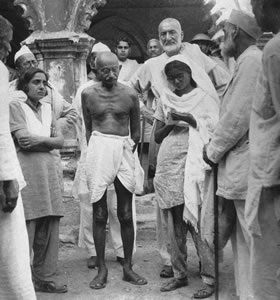

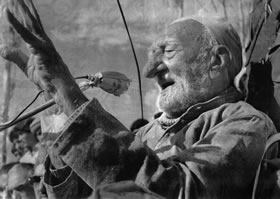

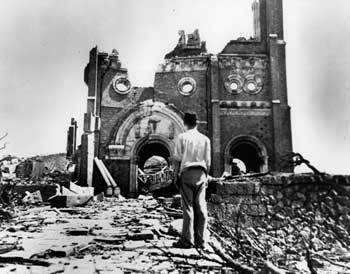

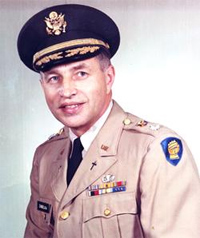
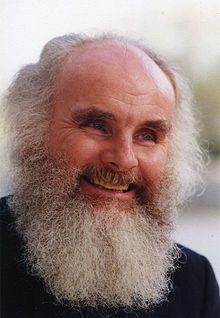
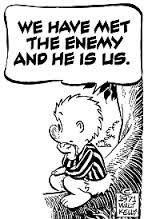 Pogo got it right.
Pogo got it right.